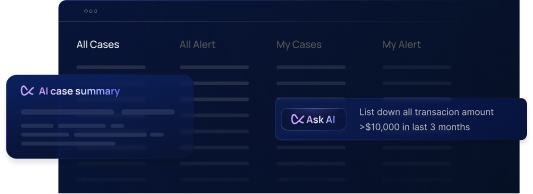Fraud prevention is often misunderstood. Some believe it only applies to large companies, while others think it’s all about technology or catching criminals. The truth is that fraud prevention protects every business, regardless of size, by safeguarding money, data, and reputation. This guide debunks 20 common myths and explains what you can do to strengthen your defenses today.
What is Fraud Prevention?
Fraud prevention refers to the policies, procedures, and technologies businesses use to reduce the risk of fraud. Unlike fraud detection, which identifies incidents after they occur, prevention focuses on stopping fraud before it causes harm.
Fraud prevention policies and procedures can be challenging for financial institutions that have grown and expanded without having these areas built into their structure. As a result, many leaders ask what steps to take as soon as they realize they may be a target of fraud. Sadly, there is no universal solution because every organization has a different setting and phase of growth.
Fraud Prevention vs. Fraud Detection
Goal
- Fraud prevention aims to stop fraud before it happens.
- Fraud detection identifies fraud after it has already occurred.
Timing
- Fraud prevention is proactive and focuses on minimizing risks ahead of time.
- Fraud detection is reactive and responds once suspicious activity is noticed.
Methods
- Fraud prevention uses policies, employee training, access controls, and compliance systems.
- Fraud detection relies on monitoring, audits, alerts, and investigations.
Cost impact
- Fraud prevention typically has a lower long-term cost because it reduces losses.
- Fraud detection often leads to higher costs if fraud has already caused financial damage.
20 Myths and the Truth About Fraud Prevention
1. Myth: Fraud prevention is only for big institutions
Truth: Fraud prevention is important for institutions of all sizes. Fraud can happen to any business, no matter how large or small.
2. Myth: Fraud prevention is only about catching criminals
Truth: Fraud prevention is also about protecting your customers and employees from fraudsters. It’s important to create a culture of fraud prevention within your organization so that everyone is aware of the risks and knows how to spot and report fraud.
3. Myth: Only businesses that have been victimized by fraud need to worry about fraud prevention
Truth: All businesses need to be concerned about fraud prevention. Fraud can happen to any business, regardless of size or industry. If you’re not taking steps to prevent fraud, you’re putting your business at risk.
4. Myth: Fraud prevention is only about technology
Truth: Technology is an important part of fraud prevention, but it’s not the only thing you need to consider. You also need to have strong policies and procedures in place so that you can quickly identify and respond to fraud attempts.
5. Myth: Fraud prevention is only about preventing financial losses
Truth: Fraud prevention is also about protecting your brand and reputation. An incident involving fraud can damage your company’s image and make it harder to win new customers.
6. Myth: All fraud prevention measures are equally effective
Truth: Not all fraud prevention measures are created equal. You need to carefully evaluate each solution to see if it’s right for your business.
7. Myth: Fraud prevention is a one-time effort
Truth: Fraud prevention is an ongoing process that requires continuous vigilance. You need to regularly review your fraud prevention measures and make sure they are up-to-date.
8. Myth: You can completely eliminate fraud
Truth: It’s difficult to completely eliminate fraud, but you can minimize the risk of fraud by implementing strong fraud prevention measures.
9. Myth: Once you’ve implemented fraud prevention measures, you don’t need to worry about fraud anymore
Truth: Even if you have implemented fraud prevention measures, you still need to be vigilant and monitor for fraud activity. Fraudsters are constantly evolving and finding new ways to commit fraud, so you need to be constantly updating your fraud prevention strategies.
10. Myth: Fraud prevention is only the responsibility of the compliance team
Truth: Fraud prevention is everyone’s responsibility. All employees should be trained on how to spot and report fraud.
11. Myth: Fraudsters only target large businesses
Truth: Fraudsters will target any business that they think they can exploit. No business is too small to be targeted by fraudsters.
12. Myth: Fraudsters are only after money
Truth: Fraudsters may also be after information, such as customer data or trade secrets. They may also commit fraud in order to damage your company’s reputation or competitive position.
13. Myth: Fraudsters are always sophisticated and difficult to spot
Truth: Fraudsters come in all shapes and sizes. Some fraudsters are very sophisticated, while others may be amateurs who are simply trying their luck.
14. Myth: You need to be an expert to detect fraud
Truth: You don’t need to be an expert to detect fraud. There are many signs of fraud that any employee can spot if they know what to look for.
15. Myth: It’s easy to spot a fraudster if you know what to look for
Truth: Spotting a fraudster is not always easy, even for experts. Fraudsters are constantly evolving and finding new ways to commit fraud, so it’s important to be constantly vigilant.
16. Myth: Fraudsters always operate alone
Truth: Fraudsters may work alone or they may be part of a larger fraud ring.
17. Myth: Fraudsters are always foreigners
Truth: Fraudsters can be anyone, regardless of their nationality.
18. Myth: Fraud is only a problem in developing countries
Truth: Fraud is a global problem that affects businesses of all sizes in all countries.
19. Myth: You can’t do anything to prevent fraud if you’re already a victim of fraud
Truth: If you’ve been victimized by fraud, it’s important to take immediate action to minimize the damage. You should also take steps to prevent fraud from happening again in the future.
20. Myth: Fraud prevention is too difficult and costly for most businesses
Truth: Fraud prevention is an important part of running a business, but it doesn’t have to be difficult or expensive. There are many fraud prevention measures that any business can implement without breaking the bank.
Risks of Ignoring Fraud Prevention vs. Benefits of Action
Risks of Ignoring Fraud Prevention
High financial losses
Fraud can drain cash reserves and increase recovery costs, which are often much higher than the cost of prevention.Reputational damage
Customers and partners lose confidence when fraud incidents occur, making it harder to retain and attract business.
Compliance penalties
Failure to meet regulatory requirements can result in heavy fines, investigations, and restrictions.
Lost business opportunities
Companies with weak fraud defenses often miss partnerships, contracts, or funding opportunities due to risk concerns.
Benefits of Taking Preventive Action
Lower financial risk
Proactive fraud prevention solutions help reduce costly incidents before they escalate.
Stronger customer trust
Clients are more likely to stay loyal when they feel their data, money, and transactions are secure.
Easier regulatory compliance
Meeting AML and fraud prevention standards helps institutions avoid penalties and pass audits smoothly.
Competitive advantage
Businesses with strong compliance frameworks position themselves as trustworthy leaders in the finance industry.
Practical Steps Your Business Can Take Today
1. Train employees to recognize fraud warning signs.
2. Establish clear reporting procedures.
3. Review and update fraud policies quarterly.
4. Use access controls to limit sensitive data exposure.
5. Partner with compliance solutions to scale prevention.
Why Work With Flagright
Fraud investigations are expensive compared to prevention. Flagright delivers AI-native transaction monitoring and AML compliance solutions that strengthen fraud defenses while keeping costs manageable. With a comprehensive compliance architecture designed to prevent fraud and seamless integration with payment processors, along with a flexible pay-for-what-you-use pricing model, Flagright has everything needed to support your business effectively.
Contact Flagright today to learn how we can help your company reduce fraud risk, simplify compliance, and protect its reputation.
Frequently Asked Questions About Fraud Prevention
How can businesses prevent financial fraud?
Businesses can prevent financial fraud by combining internal controls, employee training, and AI-powered monitoring tools. Flagright provides financial fraud prevention solutions that help institutions reduce risks in real time.
What is the difference between fraud detection and prevention?
Fraud detection identifies suspicious activity after it happens, while fraud prevention stops it before it occurs. Using both creates a layered approach to fraud detection and prevention that strengthens security.
What are the best fraud prevention solutions for financial services?
The most effective fraud prevention in financial services includes AI-native transaction monitoring, AML compliance, and customer identity checks. Flagright offers scalable, cloud-based tools that adapt to financial institutions of any size.
How do you prevent financial statement fraud?
Preventing financial statement fraud requires audits, internal oversight, and technology that detects anomalies. Flagright’s fraud prevention in the finance industry helps identify irregularities before they escalate into compliance or reputational risks.
Why is fraud prevention important for small and mid-sized businesses?
Smaller businesses are often easier targets for fraud due to limited resources. Affordable fraud prevention solutions like Flagright’s make it possible to prevent financial fraud without exceeding budget.
How does technology improve fraud prevention?
AI and machine learning improve financial fraud prevention by analyzing transactions in real time and flagging suspicious behavior. Flagright’s AI-native transaction monitoring helps institutions prevent frauds at scale.
What steps can financial institutions take to prevent fraud?
Institutions should enforce compliance policies, train staff, and adopt monitoring systems. Flagright supports the prevention of financial fraud with an adaptive compliance framework and pay-as-you-go pricing.
How to prevent frauds in digital transactions?
Categorization: Grouping data into predefined categories. This could involve classifying transactions into types (e.g., wire transfer, credit card payment, remittances) or segmenting customers based on risk profiles.
How to prevent financial fraud in the banking sector?
Banks can prevent financial fraud by adopting strict KYC processes, transaction monitoring, and ongoing compliance. Flagright helps banks modernize fraud prevention with AI-driven systems.
Why choose Flagright for fraud prevention solutions?
Flagright provides AI-native fraud prevention solutions tailored to the finance industry. With real-time transaction monitoring, AML compliance, and scalable infrastructure, Flagright empowers institutions to prevent financial fraud efficiently.
About the Author
Joseph Ibitola leads global demand generation at Flagright, an AI-native transaction monitoring and AML compliance platform. He drives marketing strategy, campaigns, and growth initiatives that help financial institutions adopt stronger compliance frameworks and reduce fraud risk. With expertise spanning fraud prevention, AML compliance, and financial risk management, Joseph also develops thought leadership and educational resources that position Flagright as a trusted partner to the finance industry.




.svg)





















